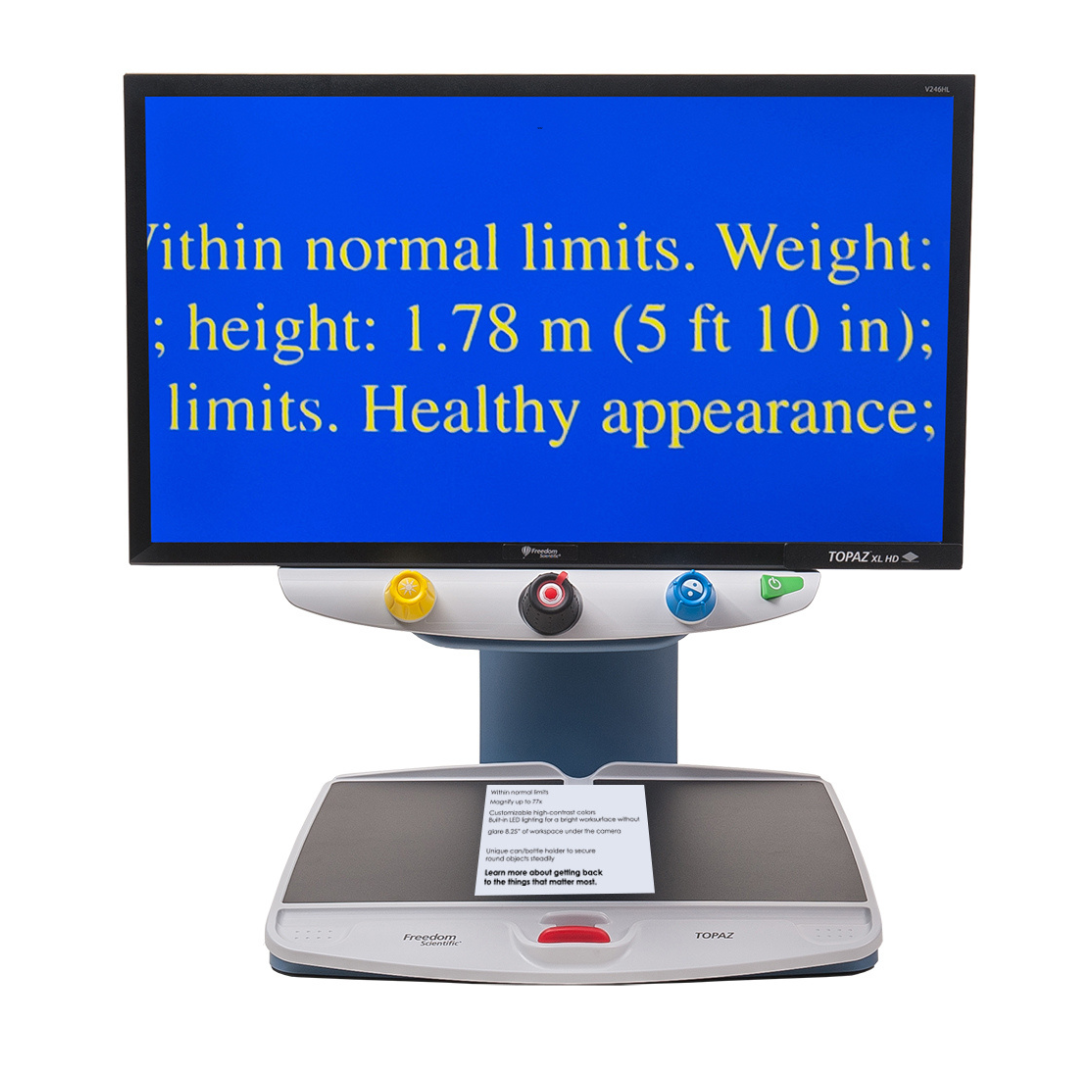1
/
of
4
Freedom Scientific Topaz EZ HD Desktop Video Magnifier - 64x Magnification
Freedom Scientific Topaz EZ HD Desktop Video Magnifier - 64x Magnification
Share
SKU:900651-001
Regular price
$3,235.84 USD
Sale price
$3,235.84 USD
Regular price
$3,795.00 USD
Unit price
/
per
Out of stock
Couldn't load pickup availability
We accept




Brilliant Magnified Images with Easy-to-Use Controls. The Freedom Scientific Topaz EZ HD Desktop Video Magnifier is simply uncomplicated magnification. This economical video magnifier emphasizes ease of use with single-function controls and a high-definition camera. The HD camera provides superior image quality, a wider field of view, and a lower magnification range.
Features:
- Magnification to 64 times (on a 24-inch monitor)
- Choice of monitor sizes: widescreen 20-inch or 24-inch
- Custom high-contrast color modes
- Color-boost contrast
- Brightly-colored control buttons
- Over 8 inches of working space to write and work comfortably
- Comfortable swivel screen
- LED lighting reduces glare
- One-touch button to freeze images
- TOPAZ EZ 24” 4.2x - 77x 43.7 lbs / 19.8 kgs
- TOPAZ EZ HD 24” 3.0x - 72x 43.7 lbs / 19.8 kgs
Warranty Information
Your product includes a three-year warranty against manufacturing defects. You may extend this warranty to add two additional years by purchasing a Product Maintenance Agreement (PMA). This can be chosen from the drop-down menu.


